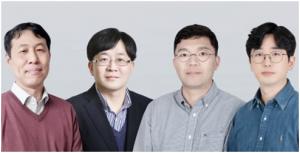
Samsung Electronics has developed a new air purification filter technology that removes fine dust and harmful gases at the same time with one single filter. The lifespan of the filter has been extended so that consumers can use it for up to 20 years by washing it with water.
The Samsung Advanced Institute of Technology (SAIT) announced on Feb. 16 that its study on the new air purifying filter technology was published in Nature Communications, a world-renowned academic journal.
A member of the research team said that they have developed a new filter technology by using photocatalysts that use light, such as copper oxide (Cu2O) and titanium dioxide (TiO2).
The new filter has an inorganic film coated on the entrance of a porous air purifying filter, which is made of ceramic material. This film removes fine dust. A photocatalyst is coated on the filter exit passage to remove harmful gases. As a result of unifying the dual structure of fine dust and harmful gas filters in this way, the new filter’s dust collection capacity surged about 4 times compared to other high efficiency particulate air (HEPA) filters.
On top of that, copper oxide and titanium dioxide are materials with waterproof properties, so their performances do not deteriorate even after being washed with water. If reused 10 times through water washing, it can be used for 20 years. This means that the lifespan of the new filter is up to 40 times longer than that of existing HEPA filters.
In the past, the formation of an air purifying system required each filter for removing fine dust and harmful gases. Therefore, there was a limit to increasing the space efficiency of an air purifying facility. Moreover, such filters were difficult to reuse, so people had to replace them with new ones every six months or once a year.

